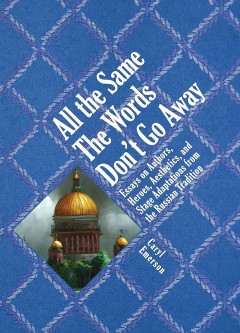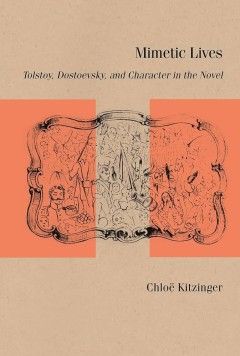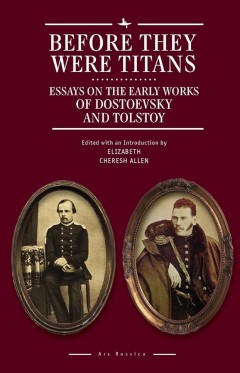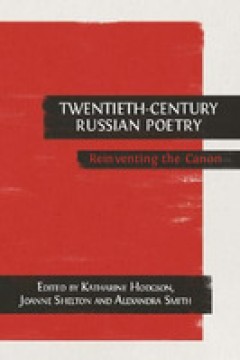Filter by

All the Same The Words Don't Go Away : Essays on Authors, Heroes, Aesthetics,…
Twenty-five years of essays and reviews, linked loosely by three themes. First is the creative potential inherent in transposing classic literary texts into other genres of media (operatic, dramatic) and the responsibilities, if any, that govern the transposer, audience, and critic. The practice of transposition, however, gives rise to a creative conflict: is there a limit to the amount of orna…
- Edition
- -
- ISBN/ISSN
- 9781934843819
- Collation
- -
- Series Title
- -
- Call Number
- 800 EME a

Memory, edited :taking liberties with history
"Memory, Edited explores historical memory in the context of today's crises of extremism and polarization, showing how narratives that seem to reveal an "arc of history" leading to progress or salvation are false accounts that exclude some groups and privilege others. Rumsey gives us a deep look at 20th century Russian and Eastern European artists as a way of exploring the effects of authoritar…
- Edition
- -
- ISBN/ISSN
- 9780262376150
- Collation
- 1 online resource
- Series Title
- -
- Call Number
- -

Remarks on the phonological evolution of Russian in comparison with the other…
This is the first English translation of a groundbreaking 1929 work in historical phonology by the renowned linguist Roman Jakobson, considered the founder of modern structural linguistics. A revolutionary treatment of the phonological evolution of Russian in relation to other Slavic languages, the book introduced a new type of historical linguistics that focused on the systematic reasons behin…
- Edition
- -
- ISBN/ISSN
- 9780262348836
- Collation
- 1 online resource.
- Series Title
- -
- Call Number
- -

The new political economy of Russia
This book was written by a team of researchers from CEFIR in Moscow.An analysis of the challenges facing Russia's economy ten years after the transition, based on recent research and data.Can Russia's recent burst of economic growth be sustained? Taking a comprehensive look at the economic and political regime shift from Yeltsin to Putin, this book explores the key challenges facing the Russian…
- Edition
- -
- ISBN/ISSN
- 9780262268240
- Collation
- 1 online resource (x, 168 pages) :illustrations
- Series Title
- -
- Call Number
- -

The economics of transition
Russian analysts discuss postcommunist economic transformation.The end of the Cold War saw an unprecedented number of countries changing economic policies at the same time. One result has been the emergence of a new field of economics, postcommunist transformation theory. Written by prominent Russian analysts, the essays in this book discuss the economic policy problems that confront postcommun…
- Edition
- -
- ISBN/ISSN
- 9780262273367
- Collation
- 1 online resource (xxvi, 1030 pages) :illustrations, charts
- Series Title
- -
- Call Number
- -

The Russian military :power and policy
Russian military capacity remains a major consideration for global security even in the post-Soviet era. This book assesses today's Russian military and analyzes its possible future direction. The contributors--experts on the subject from both Russia and the West--consider not only how Russia has built its military capacity but also the policies and doctrines that have shaped Russia's defense p…
- Edition
- -
- ISBN/ISSN
- 9780262279857
- Collation
- 1 online resource (xiii, 241 pages).
- Series Title
- -
- Call Number
- -

Without a map :political tactics and economic reform in Russia
OCLC-licensed vendor bibliographic record.
- Edition
- -
- ISBN/ISSN
- 0585263787
- Collation
- 1 online resource (ix, 223 pages) :illustrations
- Series Title
- -
- Call Number
- -

Mimetic Lives : Tolstoy, Dostoevsky, and Character in the Novel
What makes some characters seem so real? Mimetic Lives explores this unprecedented question on the rich ground of Tolstoy’s and Dostoevsky’s fiction. Each author discovered techniques for intensifying the aesthetic illusion Kitzinger calls mimetic life: the reader’s sense of a character’s embodied existence. Both authors tested the limits of that illusion by pushing it toward the novel�…
- Edition
- -
- ISBN/ISSN
- 9780810143975
- Collation
- 256 halaman
- Series Title
- -
- Call Number
- 800 KIT m

Before They Were Titans : Essays on the Early Works of Dostoevsky and Tolstoy
Dostoevsky and Tolstoy are the titans of Russian literature. As mature artists, they led very different lives and wrote vastly different works, but their early lives and writings display provocative kinships, while also indicating the divergent paths the two authors would take en route to literary greatness. The ten new critical essays here, written by leading specialists in nineteenth-century …
- Edition
- -
- ISBN/ISSN
- 9781618116833
- Collation
- -
- Series Title
- -
- Call Number
- 800 ALL b

Twentieth-Century Russian Poetry: Reinventing the Canon
The canon of Russian poetry has been reshaped since the fall of the Soviet Union. A multi-authored study of changing cultural memory and identity, this revisionary work charts Russia’s shifting relationship to its own literature in the face of social upheaval. Literary canon and national identity are inextricably tied together, the composition of a canon being the attempt to single out those …
- Edition
- -
- ISBN/ISSN
- 9781783740871
- Collation
- -
- Series Title
- -
- Call Number
- -
 Computer Science, Information & General Works
Computer Science, Information & General Works  Philosophy & Psychology
Philosophy & Psychology  Religion
Religion  Social Sciences
Social Sciences  Language
Language  Pure Science
Pure Science  Applied Sciences
Applied Sciences  Art & Recreation
Art & Recreation  Literature
Literature  History & Geography
History & Geography